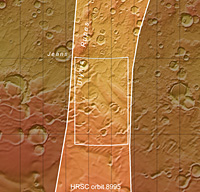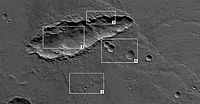
In November 2010, the distant dwarf planet Eris passed in front of a faint background star, an event called an occultation. These occurrences are very rare and difficult to observe as the dwarf planet is very distant and small. The next such event involving Eris will not happen until 2013. Occultations provide the most accurate, and often the only, way to measure the shape and size of a distant Solar System body.
The candidate star for the occultation was identified by studying pictures from the MPG/ESO 2.2-metre telescope at ESO’s La Silla Observatory. The observations were carefully planned and carried out by a team of astronomers from a number of (mainly French, Belgian, Spanish and Brazilian) universities using — among others — the TRAPPIST [1] (TRAnsiting Planets and PlanetesImals Small Telescope, eso1023) telescope, also at La Silla.
“Observing occultations by the tiny bodies beyond Neptune in the Solar System requires great precision and very careful planning. This is the best way to measure Eris’s size, short of actually going there,” explains Bruno Sicardy, the lead author.
Observations of the occultation were attempted from 26 locations around the globe on the predicted path of the dwarf planet’s shadow — including several telescopes at amateur observatories, but only two sites were able to observe the event directly, both of them located in Chile. One was at ESO’s La Silla Observatory using the TRAPPIST telescope, and the other was located in San Pedro de Atacama and used two telescopes [2]. All three telescopes recorded a sudden drop in brightness as Eris blocked the light of the distant star.
The combined observations from the two Chilean sites indicate that Eris is close to spherical. These measurements should accurately measure its shape and size as long as they are not distorted by the presence of large mountains. Such features are, however, unlikely on such a large icy body.
Eris was identified as a large object in the outer Solar System in 2005. Its discovery was one of the factors that led to the creation of a new class of objects called dwarf planets and the reclassification of Pluto from planet to dwarf planet in 2006. Eris is currently three times further from the Sun than Pluto.
While earlier observations using other methods suggested that Eris was probably about 25% larger than Pluto with an estimated diameter of 3000 kilometres, the new study proves that the two objects are essentially the same size. Eris’s newly determined diameter stands at 2326 kilometres, with an accuracy of 12 kilometres. This makes its size better known than that of its closer counterpart Pluto, which has a diameter estimated to be between 2300 and 2400 kilometres. Pluto’s diameter is harder to measure because the presence of an atmosphere makes its edge impossible to detect directly by occultations. The motion of Eris’s satellite Dysnomia [3] was used to estimate the mass of Eris. It was found to be 27% heavier than Pluto [4]. Combined with its diameter, this provided Eris’s density, estimated at 2.52 grams per cm3 [5].
“This density means that Eris is probably a large rocky body covered in a relatively thin mantle of ice,” comments Emmanuel Jehin, who contributed to the study [6].
The surface of Eris was found to be extremely reflective, reflecting 96% of the light that falls on it (a visible albedo of 0.96 [7]). This is even brighter than fresh snow on Earth, making Eris one of the most reflective objects in the Solar System, along with Saturn’s icy moon Enceladus. The bright surface of Eris is most likely composed of a nitrogen-rich ice mixed with frozen methane — as indicated by the object's spectrum — coating the dwarf planet’s surface in a thin and very reflective icy layer less than one millimetre thick.
“This layer of ice could result from the dwarf planet’s nitrogen or methane atmosphere condensing as frost onto its surface as it moves away from the Sun in its elongated orbit and into an increasingly cold environment,” Jehin adds. The ice could then turn back to gas as Eris approaches its closest point to the Sun, at a distance of about 5.7 billion kilometres.
The new results also allow the team to make a new measurement for the surface temperature of the dwarf planet. The estimates suggest a temperature for the surface facing the Sun of -238 Celsius at most, and an even lower value for the night side of Eris.







































